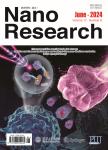Rutile TiO2 Microspheres with Exposed Nano-Acicular Single Crystals for Dye-Sensitized Solar Cells
Rutile TiO2 Microspheres with Exposed Nano-Acicular Single Crystals for Dye-Sensitized Solar Cells作者机构:Centre for Clean Environment and Energy and Griffith School of Environment Griffith University Gold Coast Campus Queensland 4222 Australia State Key Laboratory of Polymer Physics and Chemistry Changchun Institute of Applied Chemistry Chinese Academy of Sciences Changchun 130022 China Department of Materials Engineering Monash University Melbourne Victoria 3800 Australia
出 版 物:《Nano Research》 (纳米研究(英文版))
年 卷 期:2011年第4卷第10期
页 面:938-947页
核心收录:
学科分类:081702[工学-化学工艺] 08[工学] 0817[工学-化学工程与技术] 080502[工学-材料学] 0805[工学-材料科学与工程(可授工学、理学学位)]
基 金:Supported by the Australian Research Council (ARC)
主 题:High refractive index rutile TiO2 microspheres acicular single crystals synergetic effect dye-sensitized solarcells (DSSCs)
摘 要:Uniquely structured rutile TiO2 microspheres with exposed nano-acicular single crystals have been successfully synthesized via a facile hydrothermal method. After calcination at 450 ℃ for 2 h, the futile TiO2 microspheres with a high surface area of 132 m2/g have been utilized as a light harvesting enhancement material for dye-sensitized solar cells (DSSCs). The resultant DSSCs exhibit an overall light conversion efficiency of 8.41% for TiO2 photoanodes made of futile TiO2 microspheres and anatase TiO, nanoparticles (mass ratio of 1:1), significantly higher than that of pure anatase TiO2 nanoparticle photoanodes of similar thickness (6.74%). Such a significant improvement in performance can be attributed to the enhanced light harvesting capability and synergetic electron transfer effect. This is because the photoanodes made of futile TiO2 microsphere possess high refractive index which improves the light utilisation efficiency, suitable microsphere core sizes (450-800 nm) to effectively scatter visible light, high surface area for dye loading, and synergetic electron transfer effects between nanoparticulate anatase and nano-acicular futile single crystals phases giving high electron collection efficiency.



